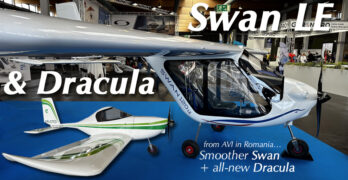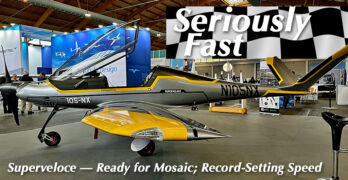I found much to discover at Aero Friedrichshafen 2023 but in one exhibit space I found two wonderful surprises. Both are from AVI Aircraft.
One was easy to pick out as new. The other initially fooled me. In the Aero event I missed last year due to Covid (and the prior two years that were cancelled due to government Covid restrictions), AVI developers have been busy.
New from AVI Aircraft
Dracula immediately caught my eye as it did for many Aero attendees. It was new. It was charming. It was sleek. And it still folds up small like its older sibling, Swan. More on that below. Yet Dracula distracted me from Swan, which I thought I already knew. The older model has also been brilliantly renewed.
In addition to dashing lines, especially for a Part 103 ultralight, AVI Aircraft models are affordable. I am aware that word means something different to every pilot, yet in 2023 a ready-to-fly aircraft that looks like Swan in the low $30,000s* may appeal to wide range of budgets.











